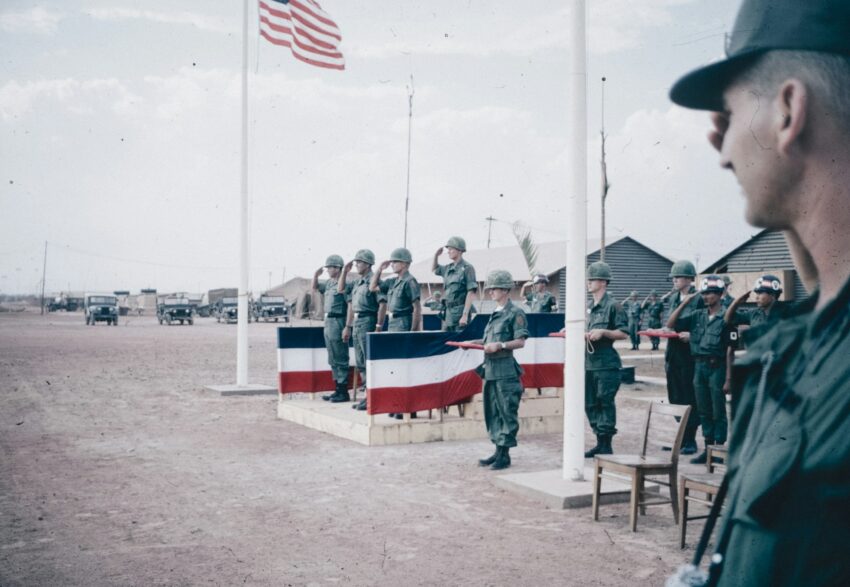Part One
In 1960 the United States decides to send 3,500 U.S. troops to Vietnam and in the years to follow, it became an era dominated by war. The Vietnam conflict was as a divisive of a conflict for the U.S. as was the civil war. It began well before Kennedy took office and didn’t end until after Nixon left office, in 1974. Its presence influenced the way of life in the U.S., in the rise of protest, in those who were for the war, and in for those who were against the war. By the end of 1966 there were 190,000 troops in Vietnam.
Without a doubt, the Vietnam War made its impact in many of the lives of the American people and its culture.
In agricultural, the military draft drew many men out of the fields. Agricultural was labor intensive and the farms employed close to half the U.S. workforce. This loss in labor brought about the need to replace the labor loss with machinery and accelerated the mechanization of the agricultural industry. This development altered the role of farming in the overall economics and culture for rural America. Farm operations became specialized and the households adapted to exploring off-farm opportunities in urban areas. (The 20th Century Transformation of U.S. Agriculture, Economic Information Bulletin Number 3, June 2005)
Student protests emerged in the 60s, and was termed the ‘youth revolt’. A Harris poll conducted in the Spring of 1968 estimated that there were about 100,00 activist some where between 1 to 2% of the college population (quoted in Lipset 1968), however, in contrast, non-college youth supported the war. By 1969 the country’s citizenry both young and old were divided, by 58% opinion, to end the war.
Beyond political controversy, there were people planning their futures, raising their families; looking for ways in which, to enrich their lives and the lives of others.
In every day life, two thirds of high school age kids could not move on to college or work. Deemed a product of the 1930s Great Depression, as well as, risen from the, Baby Boom generation, some estimated 1,000,000 youngsters, didn’t have a place in society. The U.S. Labor Department estimated between, 1960 – 1970, 7,500,000 would lack a high school education. (reported in Saturday Evening Post, 03-10-1962, “We Waste A Million Kids A Year”, in pt.1 of 3)
Of those that dropped out of high school, studies were conducted. One, Glenn Street of the Educational Testing Service, Princeton, New Jersey, showed that 50,000 that dropped on in a year were of the best minds in the nation; another in Iowa the students tested of more than 120 in IQ. The situation as it seems is that they didn’t have jobs to go to, once out of high school, or upon reaching the age of graduation.
With the rapid workforce growth, along with automation, within industries across America, the unskilled youth labor force, whether they were of the lowest economic level of middle-class suburbs, or a product of the rural schools, many did not have a clear path to employment, as well. Automatic elevators in New York City wiped out 40,000 jobs, just to give an example.
The first, Neighborhood Youth Corps in New York city was established by Judge Mary Conway Kohler, in 1961. (NYTimes, 1986-05-06, obits) And in 1962, Harlem Youth Opportunities Unlimited, was founded by psychologists Kenneth Clark and Mamie Phipps Clark. (From Wikipedia, Harlem Youth Opportunities Unlimited) These, as well as, other organizations were established in communities across the country, so as, to provide corrective measures.
Under President Kennedy’s, New Frontier, two pieces of legislation were passed, the Area Redevelopment Act of 1961 (ARA) and the Manpower Development and Training Act of 1962 (MDTA), the later was expanded to provide services to high school dropouts, older workers, incarcerated individuals, and those with disabilities. Initially it focused on workers displaced by automation. Another Kennedy legislative success was the Juvenile Delinquency and Youth Offenses Control Act of 1961.
These bills passed by Congress, provided limited federal funding for organizations across the U.S. so as to aid these organizations in solving the rapid workforce growth and those of graduate age, not having a job to go to.

If this is your first comment, your comment must be manually approved, before it will post. Thank you for your interest.